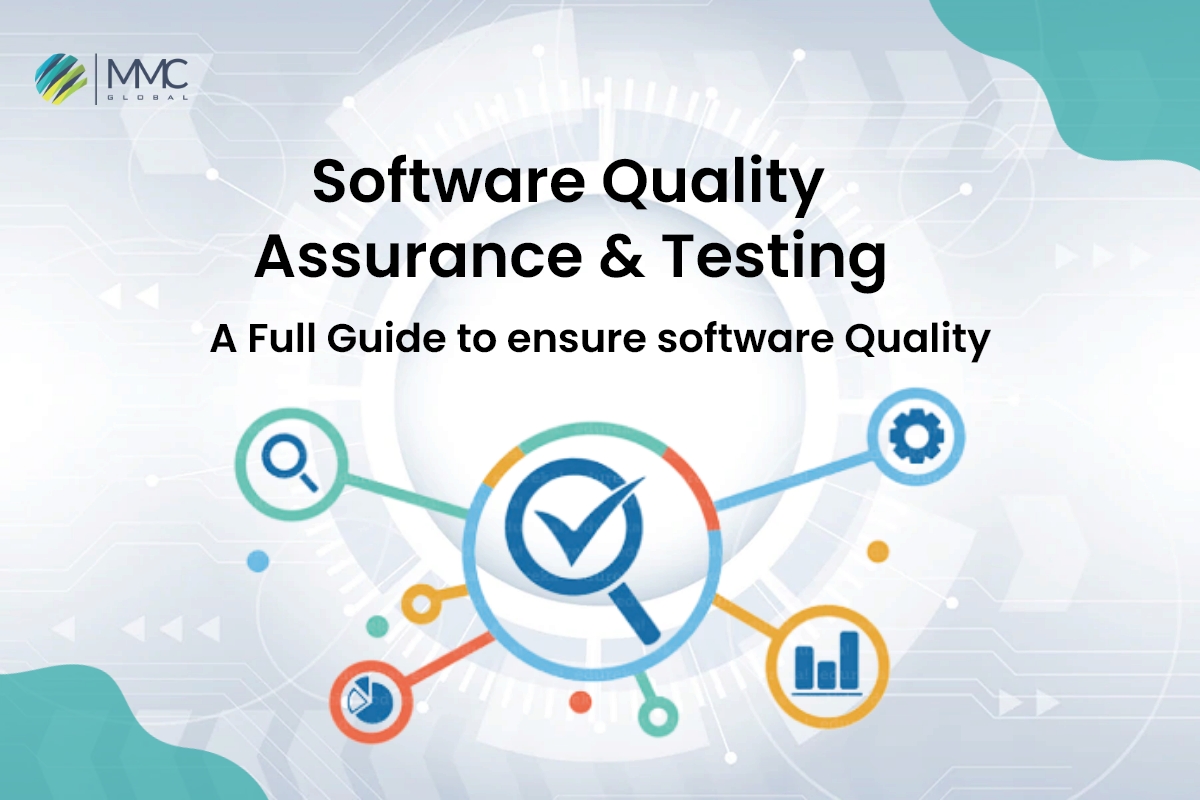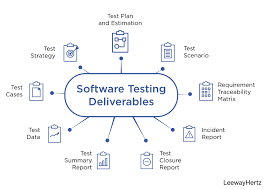Software Quality Assurance & Testing – Process, Techniques, And Types


Software quality assurance is the most critical step while developing any software or application. To provide end-users with the outclass experience, the development team takes account to make flawless software. In addition, we have to confess that no one can build error-free software on the first attempt. Not a single Pro! Software and applications are complex and ongoing tasks that need a bird view to check the whole process of development and design.
What is Software Quality Assurance?
SQA (software quality assurance) is an approach that ensures all software engineering processes, methodologies, events, and workflows meet the quality standard. These specified standards might be any of the following: ISO 9000, CMMI model, ISO15504, etc.
SQA encompasses the whole software development process, from definition to coding and release. Its main purpose is to maintain high standards.
Companies hire SQA teams to ensure the quality of their work, which helps them make the right place in the industry. Once you provide an excellent project to your clients, they will surely come back to you with more clients. If you plan to build your SQA team, MMCGBL is here to provide tech-savvy and enthusiastic SQA engineers to check and monitor software quality before handing it over to the end-user.
Significance of Software Quality Assurance
Quality Assurance is also known as Software Quality Testing or Software Testing in the software business. Software testing ensures that your customers’ software is of acceptable quality and operates as expected. Extensively tested software is more stable than untested software, and it demonstrates dependability, predictability, and resource efficiency.

Software that has been thoroughly tested is less vulnerable to instabilities, data breaches, and data loss. Because many company activities rely on the software they employ, application quality and testing are crucial for businesses.
As demonstrated by the current example of a software problem in the Boeing 737 Max aircraft pilot guidance system, which resulted in a plane accident and the priceless loss of hundreds of lives, a lack of software quality owing to incorrect testing may also end in the loss of life and property.
What is the accurate time of testing Software Quality?
Testing is the only solution for ensuring Software quality assurance. Whenever we develop and design any software and application, we create a track or work process that leads to successful project completion. Similarly, testing software is also a stage sling with multiple stages. For example, first, we discuss, plan and research the project scope and then plan. Secondly, we start building MVPs, prototyping, and finalizing the UI/UX design. After that, the third step takes you to the development step, and once it is done right, we will jump to the testing stage.
Yes, this is how testing comes in the development process. Traditionally, it is the accurate time to start testing when developers are all done with frontend and backend development. But it is not worth it if you are planning testing at the end of the story. Maybe you encounter a severe issue that disturbs all the syntax. It may cause you a time-consuming method and delay delivering the project. This method was used in the past, called the waterfall methodology.
For today’s new concepts, the agile methodology is as follows. It encourages developers to test each step after completing one development cycle. Using Agile methods in testing decreases the likelihood of a major fault slipping into your final product before it is given to the end-user, improving the product’s dependability, efficiency, and excellence.
How To Test Software quality?
People frequently inquire about the many methods of quality assurance testing. The solution, on the other hand, is not so straightforward. Before learning more about quality assurance and different testing methods, you must first answer the following question: How do you come up with a testing strategy?
It’s just as crucial to have a successful software testing strategy to test the product. Before learning about the many forms of software quality assurance testing, it’s critical to understand how to create an efficient software testing plan that ensures constant coverage and quality.

Testing Process For Software Quality Assurance
Developers have two approaches or processes for testing software quality, either manual or automatic. When we start planning to test, the first question that a developer is concerned with is which process they pick for their project. Let’s be clear by defining both of the terms.
Manual Testing
With the word “manually,” it is obvious that developers have to test software independently instead of taking help from any tool. The SQA engineers create a test case and execute it according to test plans. Now the tester considers it an end-user so they can easily determine the flaws and blackness a user can experience while using the app.
User interface design, color representation, and user experience are good examples of manual testing. Manual testing is less expensive than automated testing, but it is labor demanding and vulnerable to human mistakes and bias.
Automation Testing
One of the finest ways to ensure the quality of the software is automating testing. Automation testing demands no human intervention, but it creates automated test cases and test plans. It is more efficient and eliminates the risk of human error but needs expensive automation tools for testing.
Automation testing pays out in the long term because, unlike manual testing, automation scripts designed by expert testers often identify a far larger proportion of issues.
Software Quality Assurance Testing Techniques
There are three broad techniques for software quality assurance testing.
Black Box Testing
Black box testing involves simulating the end-user to evaluate your program. This testing method implies the tester is an end-user of the program and focuses on the user interface rather than the internals of the product being tested.
Grey Box Testing
Grey box testing creates intelligent test scenarios based on access to the source code and user interface. Moreover, t is executing black box testing while getting accessibility to the software’s source code in order to run informative tests to detect boundary values and faults.
White Box Testing
White box testing examines the application or software at the structural level. It evaluates the software’s inner structure and the integration of its many aspects. White box testing may be used in software testing procedures at the unit, integration, and system levels. White box techniques have the following types of quality assurance testing: fault injection, API testing, dynamic testing, static testing, mutation testing, etc.
Software Quality Assurance Testing Types
Numerous types of testing contain different functionalities, features, pros, cons, and limitations. It helps developers check in-depth and recheck software to minimize glitches and cracks. However, there are mainly two types of software quality assurance.
- Functional
- Non-Functional
Functional Testing
Functional testing further has eight types that we will discuss one by one. But before that, what functional testing is must to know. Functional tests confirm that the software under test meets the requirements specified in the software requirement specification.
Unit Test
The unit test refers to the single and smallest part of the codebase that tests independently during the initial development stages. Unit testing is the process of putting separate software components through their paces. Programmers typically perform this test to ensure that compiled code is working properly.
Smoke Testing
Smoke testing is a software testing type used after a software development to ensure that the software’s essential capabilities are operating properly. It is run before any functional or regression tests are run in detail.
Interface Testing
The term “interface” refers to a connection that connects two components. Interface testing is a sort of software testing that checks if communication between two separate software systems is working properly. This interface might be anything from APIs to web services in the computer world. Interface testing is the process of evaluating these connected services or interfaces.
Regression Testing
Regression testing involves putting the entire software through its paces to see how it reacts to a new feature. With regression testing, you can minimize the chances of software crash-resistant. Once it shows results, the developer decides whether it is worth it.
Integration Testing
Unit testing is the process of putting separate software components through their paces. Programmers typically perform this test to ensure that compiled code is working properly.
System Testing
System testing is a type of testing that verifies a software product’s completeness and integration. A system test is used to assess the end-to-end system requirements. Typically, the software is just one part of a bigger computer system.
Sanity Testing
Sanity testing determines whether the intended functionality is functioning properly. If the sanity test fails, the build is refused in order to save time and money on more thorough testing.
Beta Testing
Acceptance of User Acceptance testing compares the program to its specifications to see if the end-to-end flow meets the user’s criteria.
Non Functionaing Testing
Non-functional testing examines the software’s non-functional specifications to assess its performance, usability, and dependability. The following are examples of non-functional testing:
Performance Testing
Performance testing must be necessary to ensure the software performs up to its standard. It is non-functional software testing that examines how well an application’s security, efficiency, adaptability, and responsiveness hold up under a particular load.
Load Testing
Load testing examines the software’s functionality under specified load levels that might result in performance deterioration. Moreover, load testing refers to an application or system as close to becoming a final product that can be deployed and used by the masses as feasible.
Security Testing
Security testing allows you to strengthen your security standard to avoid cyberattacks. Additionally, security testing examines the software data for breaches, malware assaults, and security flaws.
Volume Testing
It allows you to examine the speed and performance of software when it encounters a massive database. Volume testing is usually used to measure large data with a certain amount of security blocks.
Install Testing
If you are providing software and application that is a must to install, you can pick install testing to eliminate roadblocks to installation. Install testing takes care of user-side instructions and the installation process, so they never face any challenges while installing the app or software.
Recovery Testing
Recovery testing entails forcing the system to crash and assessing its capacity to restore from it.
Usability Testing
The testing process is all about users’ ease. Usability testing helps to determine the end-user hurdles while using the software. Developers keep themselves to the client-side and run the software as a user to examine the performance and efficiency during usability.
Compliance Testing
Compliance testing puts software through its paces against a set of standards to see if it meets them.
Localization Testing
Localization testing ensures that software behaves correctly, is accurate, and is suitable for certain places and areas. It might range from a single city to a whole country. The approach simulates how the program will react in certain scenarios.
Bottom Line
SO, let’s wrap up!
When it comes to software quality assurance, organizations put all their attention into delivering the best software to clients. They conduct multiple times of testing with different types and make sure nothing is left.
The types mentioned above of software quality assurance prove the necessary step in the development process. No matter how fast your software is, in case you are adding a new feature, you have to conduct testing thoroughly.
If your software is ready from the development side but still stuck in the testing stage, MMCGBL gives you a professional hand to take over the project. Our SQA team will never let you down because we deliver projects after satisfying 100 times of testing with 100% quality and successful projects. Let’s Test your software!



